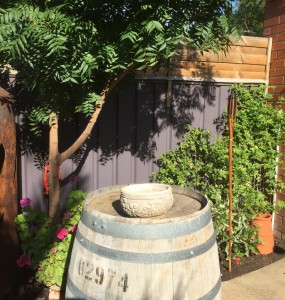* Pulse your watering cycle (use the permitted watering times to spread the delivery of the water over the available time rather than just drown the lawns and gardens)
* Some soils have become hydro-phobic (meaning they repel water), so you may need to work on them. You can do this by either a wetting agent, worm juice (from Kevin Stone in Mildura) or get an organic mulching system in place.
* Do not remove dried leaves and branches yet, let them continue to shade the green that has survived.
* If you are trying to establish a new lawn and it’s getting hammered by hot weather. Hold off for a while, re-sow warm season grass seed and mulch with third cut Lucerne or a good quality Pea Straw. This will stabilise the soil, keep moisture at the seed and improve soil (and no you don’t have to rake it up before you mow your new lawn – just mow over it).
* Shade smaller plants using shade mesh attached to the fence, so you can role it down like a blind (suggest not to use any other material, as may compound the problem).
* Start to plan on changing the colour of your steel fences to absorb heat rather than radiating it back onto the plants (consider use of other materials for fencing, or clad with more natural screens).
* Once you get the plants and lawn looking like they’re not wilting, give them a hit of liquid fertiliser to get some nutrients back into the system (just like us!).
* Now plan your garden around the next hot spell with appropriate selection of plant types for our region, correct positioning, types of shade structures, colour etc.
